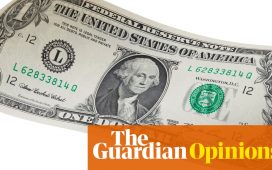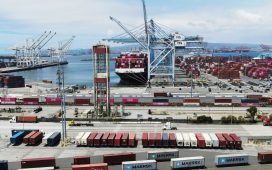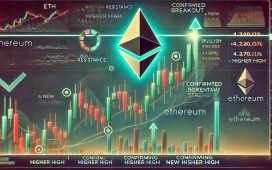The recession caused by the Covid-19 pandemic was the shortest on record, thanks to rapid, robust and bipartisan congressional action. It took just over two years to regain all of the jobs lost — hard to fathom given that more than six million people filed unemployment insurance claims in one week at the end of March 2020. Americans were made whole by their government, which staved off what otherwise would have been mass financial suffering.
“This is the best, most successful response to an economic crisis that we have ever mounted, and it is not even close,” H. Luke Shaefer, a professor at the University of Michigan who is an expert on deep poverty, told a House committee in the fall of 2021.
But by the time Dr. Shaefer testified, inflation had begun to rise, sucking all the air out of the room. As the economic conversation turned to inflation and its causes (and remained there), the debate shifted from what the government achieved to whether it went too far. Inflation hawks blamed the pandemic response for driving up consumer demand, which, in their telling, drove up prices, causing pain for many people as the cost of food, rent and other necessities rose.
The fracas over inflation risks memory-holing the concrete proof that the federal government is fully capable of keeping Americans afloat when the economy sinks. “We showed that we could do it, this is what we should be doing from now on,” J.W. Mason, an economist at John Jay College of Criminal Justice, told me. The open question, now, is whether we’ll ever do it again.
In fact, the Federal Reserve is actively working to undo many of the government’s accomplishments. To fight inflation, the Fed has been raising interest rates in the hope they will make businesses pull back, spending less on wages and hiring fewer people (or even firing a bunch of them) and cooling demand. Even as inflation has fallen this year, the agency is widely expected to announce another rate increase next week and may very well keep raising rates later this year.
When the pandemic began in March 2020, the federal government responded at lightning speed. Five days after declaring a national emergency, President Donald Trump signed the bipartisan Families First Coronavirus Response Act on March 18. Less than two weeks later he signed the similarly bipartisan Coronavirus Aid, Relief and Economic Security Act.
Together, the packages sent out about $2 trillion through $600 extra in weekly unemployment benefits and expanded eligibility, $1,200 stimulus checks, and more food assistance. That December, Congress provided $900 billion more through the Coronavirus Response and Relief Supplemental Appropriations Act, which included $300 in weekly unemployment benefits and stimulus checks of $600. In March 2021, with Joe Biden in the White House and Democrats in control of the Senate, Democrats passed $1.9 trillion through the American Rescue Plan, which included another round of stimulus checks, an expanded child tax credit, and rental assistance. In all, the relief was more than three times as much as what was offered during the Great Recession in 2007.
Results came quickly, too. The pandemic recession lasted for just two months. Unemployment hit 14.7 percent in April 2020 but fell to single digits within four months. The unemployment rate has stayed below 4 percent since the beginning of 2022. The share of employed Americans in their prime working years recently reached its prepandemic peak. “We haven’t really seen any jobs recovery at this pace,” Arindrajit Dube, an economist at the University of Massachusetts, Amherst, told me.
There are other ways to measure success. Amid staggeringly high unemployment, poverty actually fell to the lowest level on record in 2020 and then fell again in 2021. Hunger remained flat.
Hardship was averted thanks to government aid that helped replace lost income. But as the economy swiftly recovered, Americans also started to earn more, especially those making the least. Wage growth for people earning in the bottom 10 percent rose 6.4 percent between January 2020 and this past September. “That really flips the script for what’s happened in the last 40 years,” Dr. Dube said. Typically, low-wage workers see the biggest job losses in a recession, which translates to higher joblessness and lower wage growth. But not this time. Low-wage workers did suffer big job losses in the pandemic, but their wage growth was higher in this recession than in each of the last four.
Wage growth has been so strong for those who earn the least, in fact, that income inequality actually shrank. Inequality has generally expanded since the 1980s, but the robust wage growth in the wake of the pandemic has erased over a quarter of the gap between the lowest and highest paid. “This is not the type of change we see often,” Dr. Dube said.
It’s hard to know exactly what the counterfactual would have looked and felt like, how deep and wide the hole would have been without powerful congressional action. But Moody’s Analytics estimates that without federal aid, economic output would have fallen three times further in 2020 and we would have experienced a double-dip recession the following year. Jobs wouldn’t have recovered until 2026 and unemployment would have stayed in the double digits well into 2021. Wage growth would have crawled along at a record low. Poverty would have hit record highs.
We also have the very recent experience of the Great Recession to compare it to. “My biggest takeaway from the incredible success of the labor market recovery from the pandemic recession was that the jobless recovery that followed the Great Recession was a policy choice — a cruel and misguided policy choice,” said Lindsay Owens, the executive director of the liberal think tank Groundwork Collaborative.
In December 2008, Christina Romer, the incoming chair of President-elect Barack Obama’s Council of Economic Advisers, estimated that a federal stimulus package should be more than $1.2 trillion to prevent mass unemployment. Larry Summers, who would soon be director of the National Economic Council, shot down the idea. The package that passed was $787 billion. Just two years later Mr. Obama sought a “grand bargain” on deficit reduction. His eventual deal exchanged dollar-for-dollar federal spending cuts for increasing the debt ceiling, which shaved points off gross domestic product and sapped jobs from an economy still struggling to recover.
The unemployment rate hit double digits in October 2009 and stayed above its pre-recession rate for nearly eight years. Prime-age employment wouldn’t hit its pre-recession high-water mark until January 2019. Food insecurity climbed from 11.1 percent of households in 2007 to 14.7 percent in 2009. Wage growth remained stagnant for a decade.
The labor market was so soft that Americans were desperate for employment and workers got trapped in bad jobs. It was particularly painful for young people, who were stuck on a broken escalator to better employment, leaving “a sizable negative impact on an entire generation,” Dr. Dube said.
If the goal was keeping inflation low, the government did great — it stayed depressed for many years. But so did job and wage growth. Americans did “poorly” in spite of “really, really low inflation,” said Michael Madowitz, director of macroeconomic policy at the left-leaning Washington Center for Equitable Growth. It was a “lost decade.”
It’s clear the government mounted a far more successful response in the pandemic. But the victory lap was cut short. At first, businesses and conservatives started complaining that by being too generous, the government had caused too many Americans to give up. “No one wants to work anymore,” whined employers whose employees left for better jobs. That story never held up, especially given how many studies have found that more generous unemployment benefits did not cause people to stop working, nor did taking them away push them into jobs.
Then when inflation started to rise in 2021, the concern turned to the idea that federal relief was fueling it. Americans had too much government largess in their bank accounts, the reasoning went, so they were buying too many goods and services, driving prices up. Strong wage growth was only fueling the fire.
But that story doesn’t quite hold up, either. When Dr. Dube and co-authors examined this question, they found that while the tight labor market had some impact on inflation, it accounted for only about a fifth of the rise in non-energy prices. Had the sole factor affecting inflation been the tight labor market and subsequent higher wages, inflation would have been just 2.3 percent by late 2022. The economists Andrea Cerrato and Giulia Gitti came to a similar conclusion, finding that higher demand in the recovery could explain only a quarter of the increase in overall inflation.
The whole idea was always a bit ridiculous: “How did $1200 stimulus checks cause inflation in Turkey?” Dr. Owens noted. “It probably didn’t.”
Still, plenty of people have used high inflation to chide the government for doing too much. “A lot of people, whether they are honest about it or not, want to use the current inflation episode as a morality play,” said Skanda Amarnath, the executive director of Employ America.
What’s implicit when people express outrage over high inflation, and claim that it was caused by high demand after people had stimulus checks and unemployment benefits to see them through, is that they would have preferred to offer less — which would have brought about a slower, more painful recovery, “locking a lot of people out of work for a long time,” Mr. Amarnath said. “It sounds ridiculous to say, ‘We shouldn’t get the jobs back quickly because inflation.’” But that’s exactly what they mean.
Another economic nosedive will occur someday. Lawmakers will be faced with whether — and how — to act. They could heed the pandemic-era lesson that the government can and should act swiftly to prevent suffering and economic collapse. But if they focus instead on low inflation and decide that the better model was the anemic response to the Great Recession, we’ll be in for a yearslong slog that saps the American people of income and the economy of its potential.







